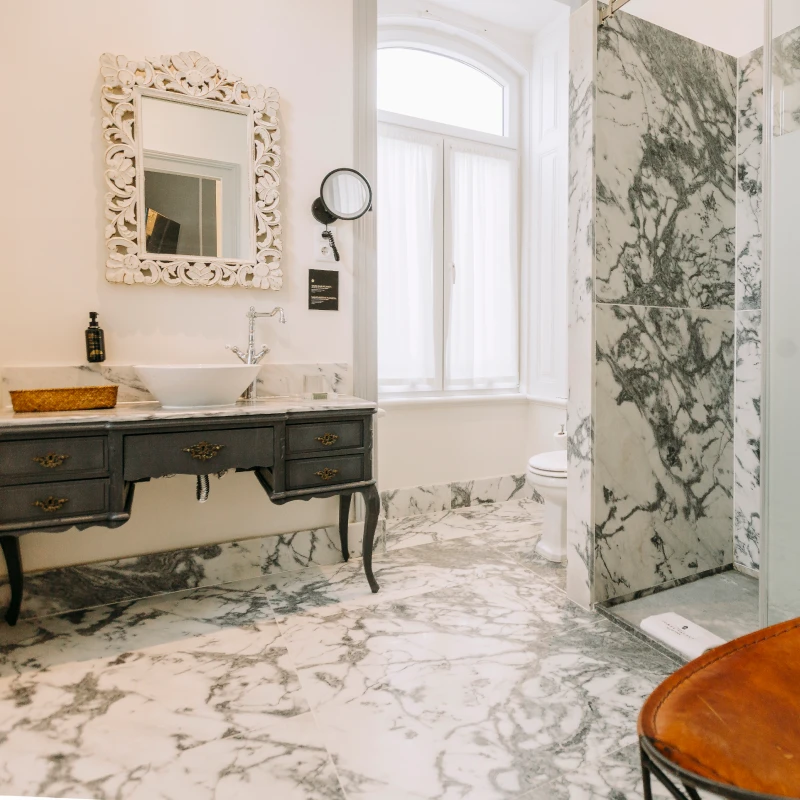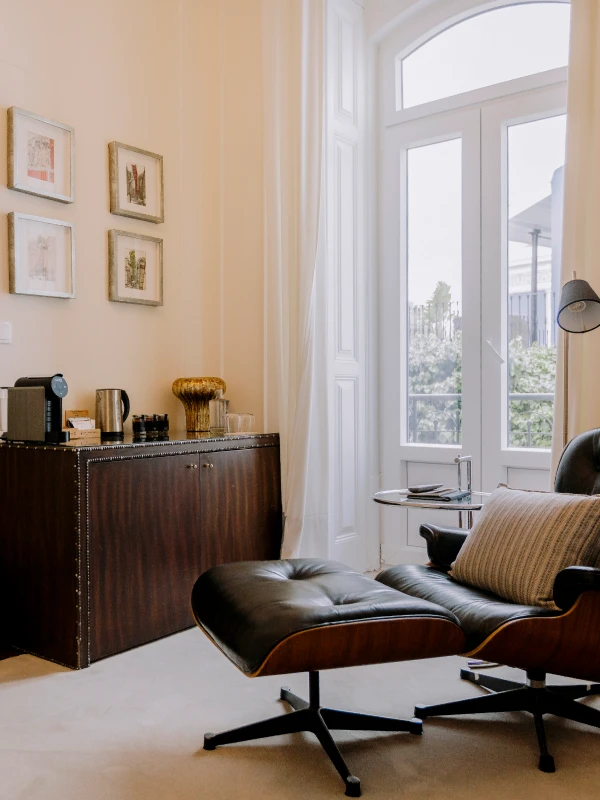Home > Dona Catarina of Bragança
Dona Catarina of Bragança
November, 1638 (Vila Viçosa, Portugal) – December, 1705 (Lisbon, Portugal)
One of the most spacious rooms in the hotel, this elegant retreat features classic-modern décor inspired by Queen Catarina de Bragança. With two large windows and a charming balcony, the room is bathed in natural light and offers a serene atmosphere — making it a truly magical place to relax and unwind.
The Master – Dona Catarina of Bragança offers 32 m² of refined elegance for up to two guests. Decorated in serene white and grey tones, this spacious room features a Queen Size bed, a large armchair, and a striking chandelier beneath an intricately detailed ceiling. The private balcony provides pleasant views over the hotel, creating a bright and inviting atmosphere.
The bathroom mirrors the room’s clean and sophisticated style, with marble floors, sink, and shower, offering generous space and refined finishes. Amenities include a Delta coffee machine, minibar, TV, free Wi-Fi, air conditioning, hairdryer, and safe. Complimentary coffee and water are provided throughout your stay for a comfortable and memorable experience.
See our other rooms in the Master Room Category:
- Up to 2 People
- 32 m2
- Queen Size Bed
- Balcony
- Hotel View
- Coffee Machine
- Mini Bar
- Television
- Free WiFi
- Air Conditioning
- Hairdryer
- Safe
- Offer of Nespresso Coffee and Water throughout your Stay









In Honor of...
Dona Catarina of Bragança

Dona Catarina of Bragança was a Portuguese infanta who became Queen Consort of England, Scotland, and Ireland through her marriage to King Charles II of England in 1662. The daughter of King João IV and Queen Luísa de Gusmão, she played a key diplomatic role at a time when Portugal sought strong allies after restoring its independence from Spain.
Her marriage secured a powerful alliance with England, and Portugal offered Tangier and Bombay as part of her dowry — helping to shape the course of British colonial expansion. Though her life in England was marked by personal difficulties, including religious tension (as a Catholic queen in a Protestant country) and her husband’s many affairs, Catarina was admired for her dignity, loyalty, and grace.
She is also credited with popularizing the drinking of tea in England, a custom she brought from the Portuguese court that would become a lasting British tradition.
After Charles II’s death, she eventually returned to Portugal, where she served as regent for her brother, King Pedro II. She died in Lisbon in 1705 and is buried at the Monastery of São Vicente de Fora. Catarina’s legacy endures as a symbol of diplomacy, elegance, and cultural influence.










